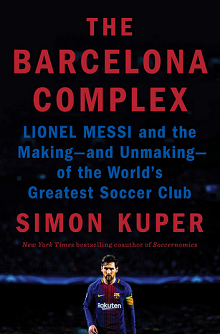It seems appropriate, off the buzz of this year’s World Cup, for a focus on either soccer (if you accept the American term) or football (if you live in the rest of the world). The World Cup saw many exciting games, and the consensus is deciding them via penalty kicks seems a bit arbitrary, but in the spirit of history, tradition, and nothing to offer as a better alternative, let’s accept the practice to determine a victor. Of course, the penalties can be exciting also, and the game cannot go on forever in extra time. As for the U.S. Men’s National Team (or USMNT), they certainly have some talented players, but the coaching needs a major overhaul. Two things of note on a long laundry list of items: (1) If you are in charge, don’t hire your brother. Even if you think your brother is highly qualified. Find someone else. (2) If you are said brother, and have conversations with players in the locker room, don’t go to reporters or others and disclose said conversations. Keep them within the team. The players will have respect for you for such professionalism, and you will earn much needed trust.
But today’s write-up isn’t about the World Cup, or the USMNT. It’s about FC (football club) Barcelona, aka “Barca”, in this well written narrative from Simon Kuper, entitled The Barcelona Complex: Lionel Messi and the Making—and Unmaking—of the World’s Greatest Soccer Club. One might be tempted to think that this book is about one of the greatest footballers of all time, Lionel Messi, but Messi’s rise throughout the Barca system is only a minor part of this story. The Barca club (which also focuses on sports besides just soccer), was founded in 1899, and is one of the highest value sports clubs and one of the richest football clubs in terms of revenue (it’s the expenses that might be the issue). To illustrate, Barca exceeded $1B in revenue in 2018. By comparison (believe it or not), in 2018 the highest revenue of an NFL team was the Dallas Cowboys, at $800M. Unlike the Cowboys, Barca posted a loss in that year. But, who really gives a rap about financial capabilities, it’s about winning games. A large part of the story of the rise of the Barca club has to do with its system of bringing young players in, as did Messi at age 13 (he is from central Argentina), and developing them within the Barca program.
The Barca story in this book takes place largely with the introduction of Dutch player/manager/coach Johan Cruyff, who had a long history in the sport, and was traded to Barca in 1973 as a player. Cruyff brought to Barca the Dutch concept of Total Football, where every player on the team (sans goalkeeper) is interchangeable. In other words, fluidity. Defender can move to attacker, and another player covers the open position left when the defender moves upfield. After Cruyff’s retirement from playing and various coaching gigs, he returned to FC Barcelona for the 1988-89 season as manager. Throughout his time as coach, he managed to win 11 trophies, only surpassed by one of his star players (and Barca coach from 2007-2012), Pep Guardiola (15 trophies).
Guardiola is a good example of the system of Barca success, joining the Barcelona youth academy (La Masia) at the age of 13 (same age as Messi), and climbing up to through the ranks and developing his talents. The 2008-09 FC Barcelona team under Guardiola (as manager) is considered one of the best ever, with many players coming from the La Masia youth program, notably Messi, Xavi, Andres Iniesta, and Sergio Busquets.
But, as with practically any ascent, there usually is a descent, and Kuper describes the fall of Barca with detail that leaves the reader with sadness. There isn’t one event to point to the financial ruin of the club, but rather a series of bad decisions and bad luck. COVID responses that left stadiums empty certainly didn’t help. All in all, Kuper’s effort here is coherent, easy to follow, and engaging.
Kuper, Simon. The Barcelona Complex: Lionel Messi and the Making—and Unmaking—of the World’s Greatest Soccer Club. Penguin. 2021.


